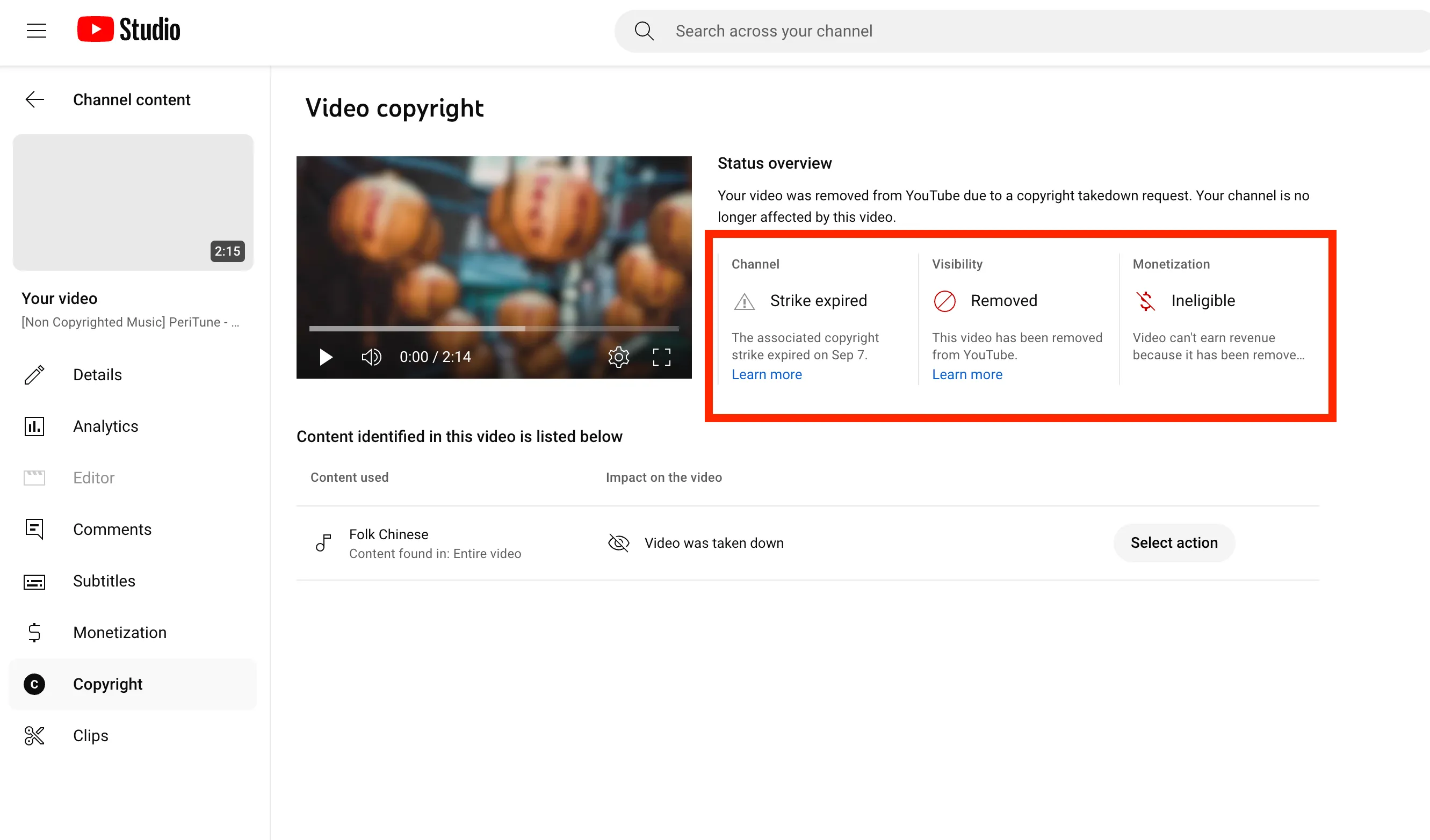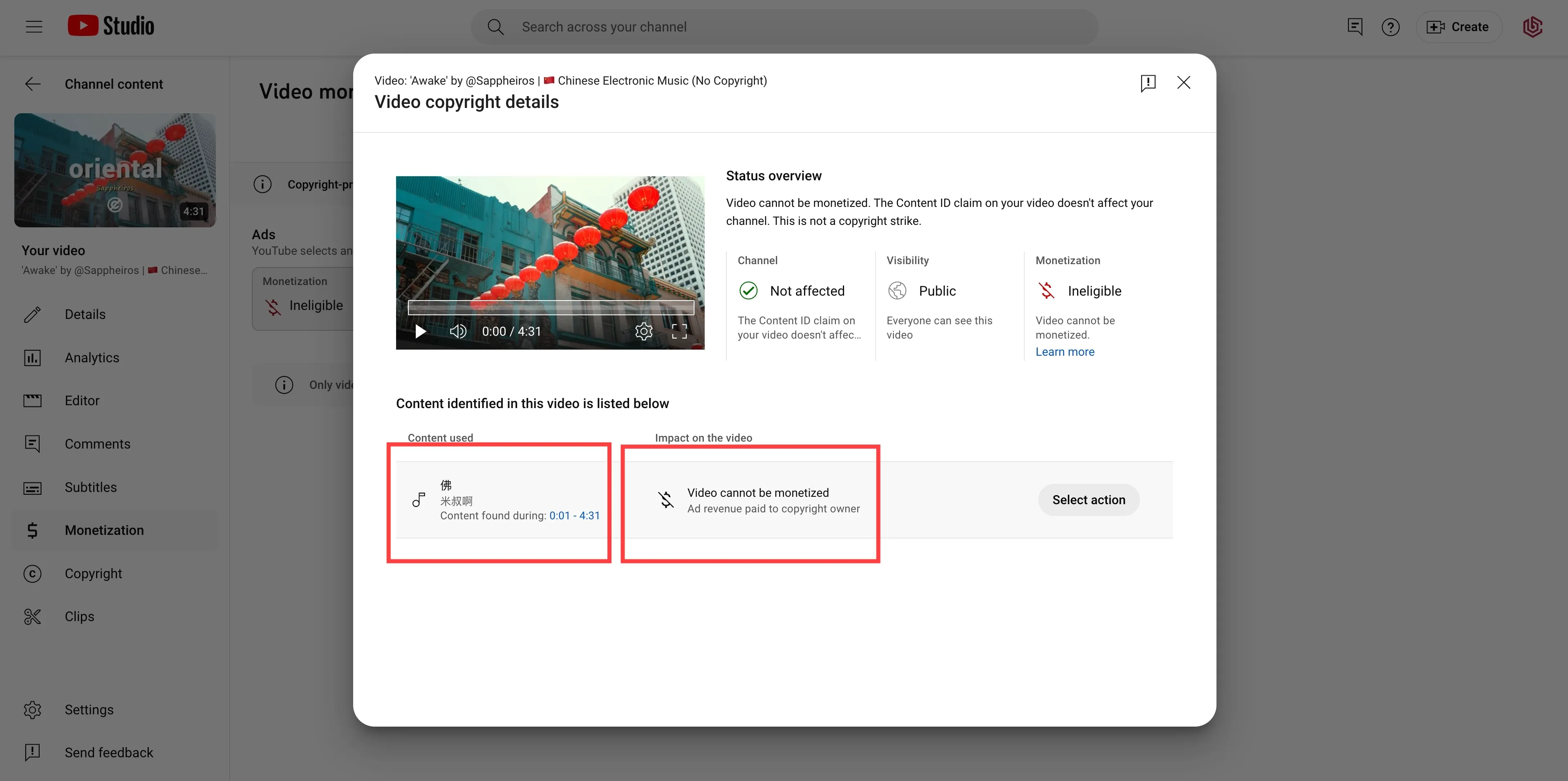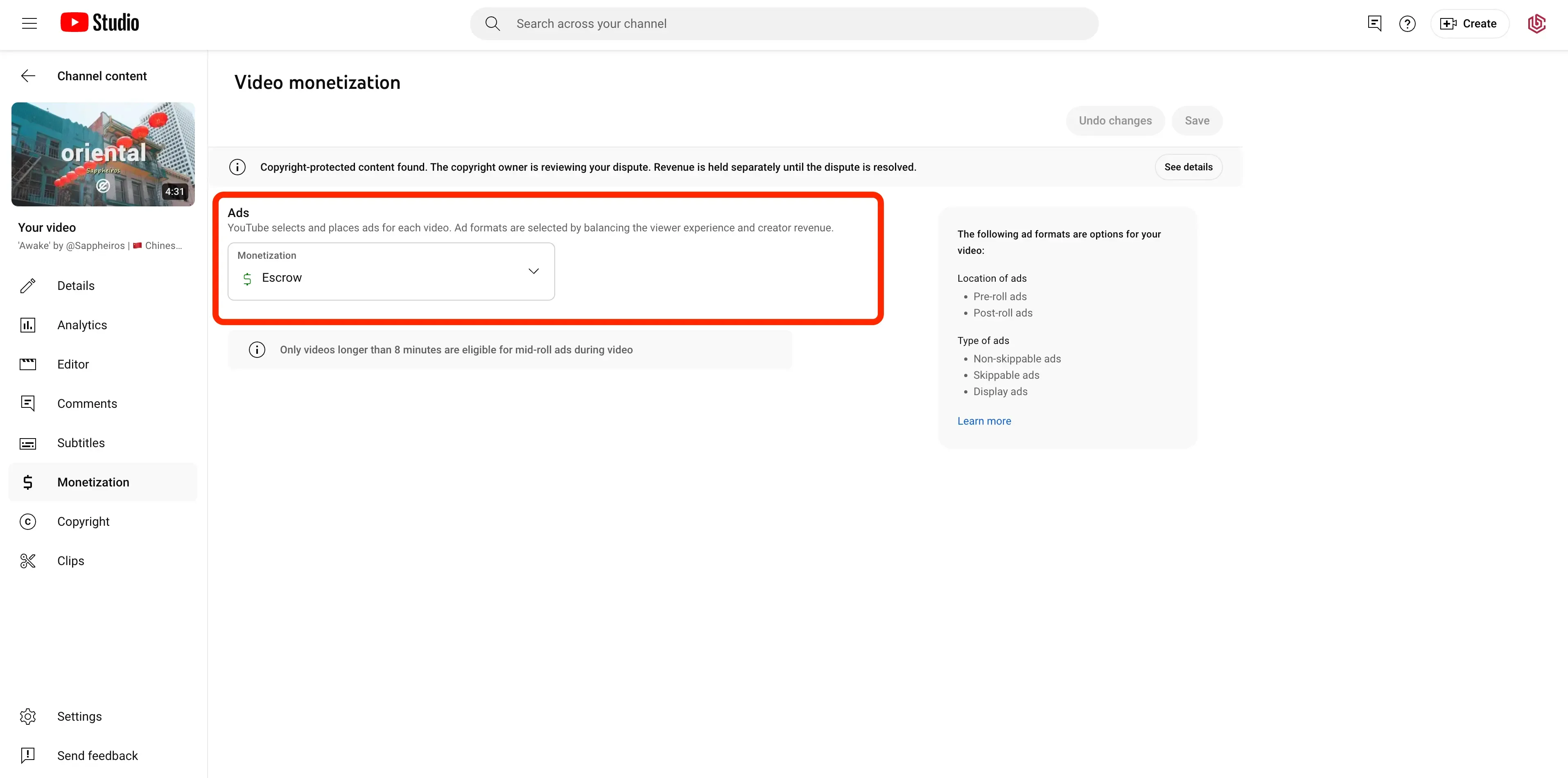How to Dispute False YouTube Copyright Claims (🫣 Real Case)
Receiving a copyright claim on YouTube can be frustrating, especially when you know you haven’t done anything wrong (or have you? 👀). Whether it's using royalty-free music, original content, or something within fair use, claims can happen. In fact, We can assure you that 100% of content creators have ever received a claim. In this guide, I’ll walk you through how to dispute false (or not) YouTube copyright claims, the options available, and what to write in your dispute.
🔎 First Steps: Recognizing a Claim Notification
The first thing you might receive is an email notification that looks something like this:

ℹ️ Important information here
The name of the claimant: 佛 - 米叔啊
Content owners: (This is the music distributor) [Merlin] EWway Music
Content type: Audio
Impact on video: Not monetising
🎩 My recommendation is to always verify that the email is from YouTube. Sometimes scammers try to steal your account by sending you this kind of emails. As the sender is "[email protected]" it is a real claim. As a second check, if the claim is recent, you’ll also see it in your YouTube Studio dashboard: https://studio.youtube.com. In our case it appears like this:

What is a YouTube Copyright Claim?
A copyright claim happens when someone says that content in your video, like music, images, or footage, belongs to them. Not all claims are correct; sometimes, they are made by mistake or falsely by third parties. When you receive a claim, YouTube usually won’t take down your video but might place ads on it, redirect the revenue, or restrict its visibility in some countries. If you’re sure the claim is wrong, you can dispute it.
Differences Between Copyright Claims and Copyright Strikes
A strike is something you never want to see in your life. No seriously, you start sweating and the first thing you think is that YouTube is going to delete your channel. And you are not far from reality—3 strikes during 90 days and your account is deleted. In fact, look what a strike looks like:

But let's be honest, a copyright claim IS NOT a strike. Again, a COPYRIGHT CLAIM ≠ STRIKE. Again? Okay I'm going to stop here. But seriously, I can be sure that all content creators have some active copyright claim right now.
A copyright claim is a notice when someone believes that part of your video uses their copyrighted content (in our case, a song or sound), often detected by YouTube's Content ID system. Claims do not directly penalize your channel, but can affect your monetization or video visibility.
🤨 Is the Claim Legitimate?
🚩 Red Flags or Signs of Fake Copyright Claims (90% of cases):
-
The claimant’s name does not match the song title or original artist.
-
The copyright matches the whole song duration.
-
Searching the claimed song on YouTube shows it was recently uploaded with few views, suggesting the claimant might be a song thief.

✅ Signs of a Legitimate Claim (10% of cases):
- The claimant’s name matches the original artist and song title.
Well here are two options:
-
7% of cases. You have not given credits correctly. For tracks from our YouTube channel: https://www.youtube.com/@BreakingCopyright, make sure you’ve credited the artist properly, included any required social media links, and provided the correct license link if it’s a Creative Commons license.
-
3% of cases. The original artist has changed the license. If you can prove that you used the song under the previous license, your dispute should be valid. Rare, but it happens.
🏗️ Step-by-Step Dispute Process
Now that you’ve established the nature of the claim, follow these steps to dispute it. It's easier to do this on a computer:
- Go to YouTube Studio, find the video with the claim, and go to the monetization section.

- Click “See Details”

- Click “Select Action” > “Dispute”

- Choose the reason: “License”

- In “Details”, check: “I have permission...”

- In “Rationale”, explain your case.

Example dispute text:
Hi YouTube, this is a fake copyright claim. The original song was produced by Sappheiros: https://soundcloud.com/sappheirosmusic/awake-1. The license of the song is Creative Commons: https://creativecommons.org/licenses/by/3.0/. Remove immediately this fake artist from your systems.
Once you click Submit, you’ll receive a confirmation. YouTube responds within 30 days, usually sooner.

💸 What About My Revenue?
During the dispute, revenue is held in limbo (escrow). Once resolved, the winning party receives the money.

😈 Why Does YouTube Allow Content Thieves?
It’s complicated. Only official distributors can register music in YouTube's Content ID system. If enough creators dispute the same scammer, the distributor may get banned. That’s why it’s important to dispute false claims.
✅ How to Avoid This in the Future
Wait for YouTube to resolve it (7–30 days). To avoid future claims, consider a paid library like EpidemicSound. It’s safer and protects your income.
🧠➡️ Free trial here: https://share.epidemicsound.com/fovcsk
BreakingCopyright exists to support creators and independent artists, but if you want peace of mind and make content professionally, a paid library is a smart investment.